Why Do Some Pigeons Have Fat Necks?
Nowadays, we often see pigeons with really fat necks. That can sometimes be concerning, given it might also be a sign of obesity.
But is that really it? Why do some pigeons have fat necks? From what I have found in my research, humans have played a significant role behind pigeons having fat necks.
Due to selective breeding and hurting the population of pigeons, the size of their beaks has changed with time, impacting the fat stored in their necks.
But that is surely not all. There’s much more to know – such as the evolutionary benefits, the behavioral patterns of such pigeons, etc. And here, we will discuss it all.
Want to learn more about pigeon blogs:
What Evolutionary Benefits Do Fat-Necked Pigeons Have?
Fat-necked pigeons, also called King pigeons or show pigeons, are a type of domestic pigeon that has been bred to have a large, fat neck. Because of their unique features, like their broad chests, short legs, and big, round eyes, they are often used in pigeon shows and exhibitions.
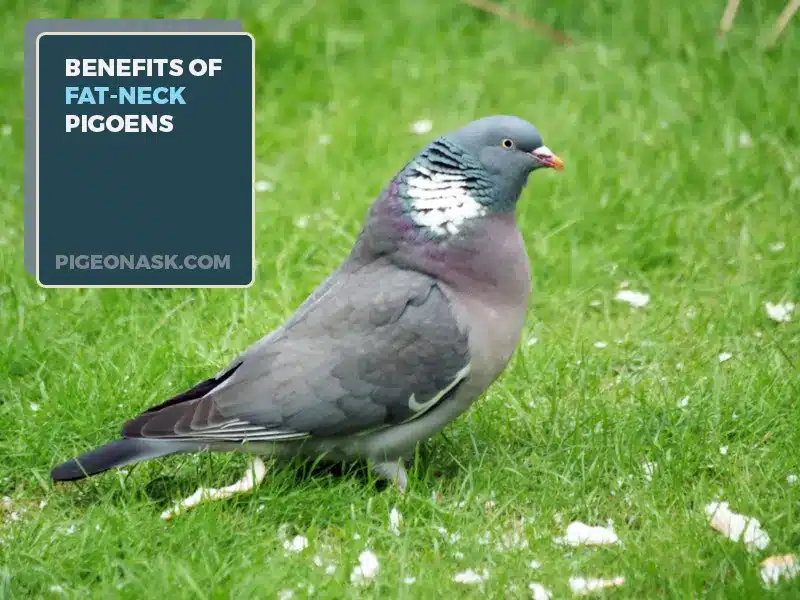
Here, we will discuss what evolutionary benefits they get from it.
Better Parenting
Pigeons use the fat on their necks to make crop milk, a high-protein, high-fat food for their chicks. This lets them give their babies all the essential nutrients they need to grow and develop.
Survival During Famine
The fat they store in their necks gives them the energy that lets them go for long periods without eating during harsh winters or when food is hard to find.
Attractiveness
During the breeding season, female pigeons are more likely to mate with males who have fat necks. On the other hand, many people tend to have these pigeons as their pets because of their appearance.
Flight Efficiency
During the flight, the weight of the head can be counterbalanced by the fat in the neck, which helps the bird fly more efficiently and move around better.
However, they may prefer to move less due to having higher fat content.
Are Fat-Necked Pigeons More Likely to Survive in Certain Environments?
Fat-necked pigeons can survive in various environments because they can store fat. For example, in cities where food sources may be scarce or unreliable, being able to store fat in their necks helps them survive when there isn’t enough food.
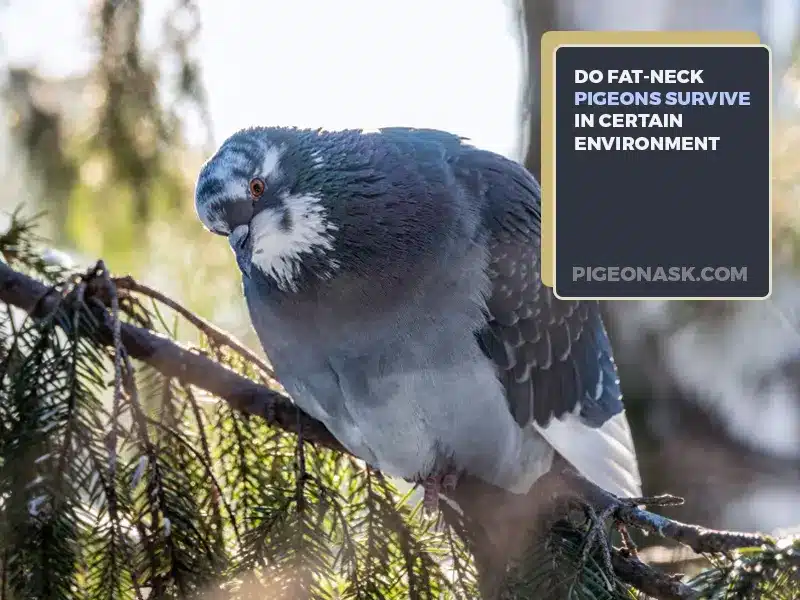
Fat storage is essential for survival in harsher places like deserts or the Arctic, where food is scarce for long periods. Studies have also shown that pigeons with bigger neck girths are more likely to survive when there isn’t much food around.
This suggests that their fat storage may be helpful in some environments. Overall, the fat that pigeons store in their necks gives them a lot of benefits that help them survive in different environments and when food is scarce.
Is There a Difference In the Fat-Necked Pigeons’ Behavior Compared to Other Pigeons?
If you are wondering whether fat-necked pigeons behave differently than other pigeons, then you are partly right. And we will look into that right here.
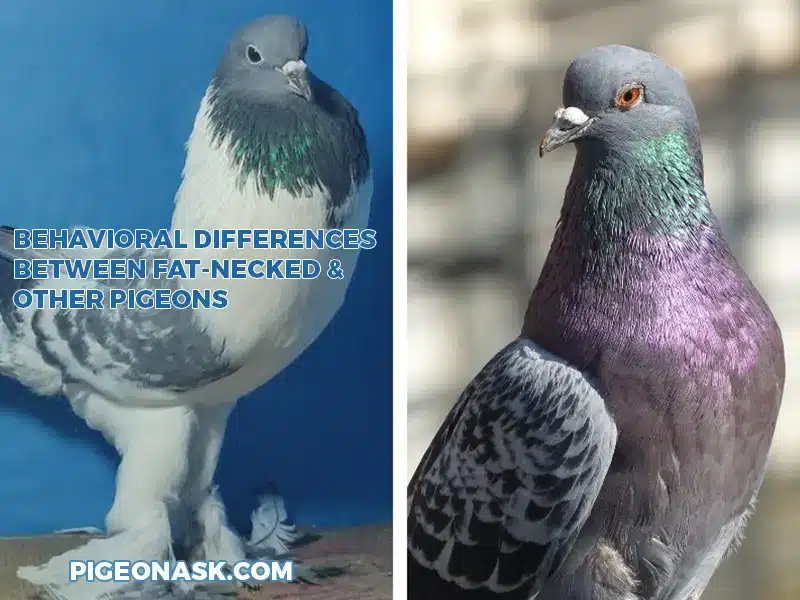
Active
Fat-necked pigeons don’t move around as much as other types of pigeons. Because they are big and heavy, they can only move slowly or fly as much.
Calm
They are also calmer and easier to care for than other breeds. People often breed fat-necked pigeons because they are calm and friendly, which makes them popular as pets.
Habitat
Fat-necked pigeons aren’t usually found in cities like wild or feral ones. Most of the time, they are kept in captivity or raised to show off.
Dietary Needs
Because they are bigger and have a slower metabolism, fat-necked pigeons may have different dietary needs than other pigeons.
Appearance
Fat-necked pigeons look different from other breeds because they have fat necks, broad chests, and short legs, which make them stand out.
How Have Human Activities Impacted the Neck Size of Pigeons?
The size of pigeons’ necks has significantly changed because of what people do. Breeding animals for specific traits, like the size of their necks, has been done for hundreds of years.
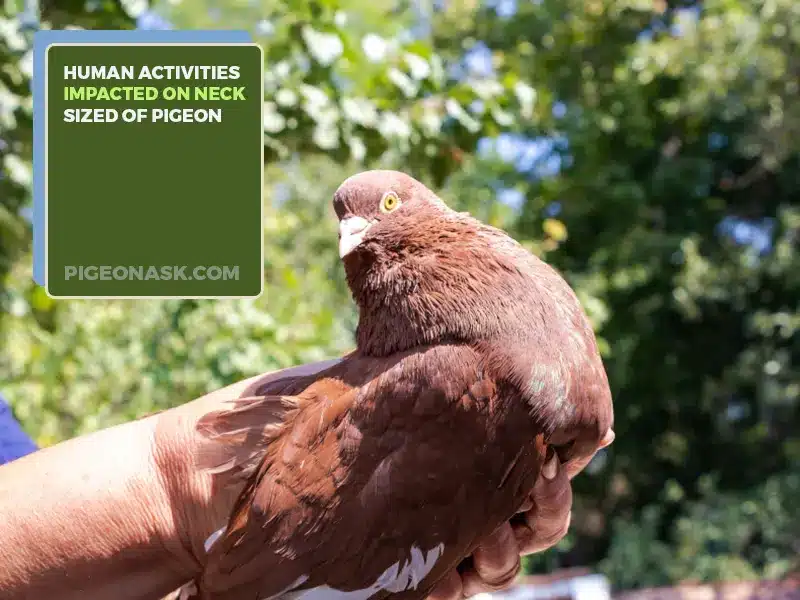
Pigeon fanciers have been breeding pigeons for their unique qualities, which has led to many different breeds of pigeons with different looks. But other than that, people’s actions have also made pigeons’ necks bigger than they should be.
For instance, pigeon populations have been hurt by pollution, habitat loss, and food availability changes. Because of these things, the size and shape of pigeon necks have changed, which is essential for feeding and staying alive.
Also, the spread of cities has had an effect on pigeon populations. Since there is a lot of food in cities, the number of pigeons has grown, and the competition for food has gotten tougher.
This has changed how pigeons act, making them more aggressive and dominant, which may affect their neck size through a combination of their genes and environment.
Overall, selective breeding has been a big part of how fat-necked pigeons have come to be, but humans have also had good and bad effects on the size of pigeons’ necks.
How Does the Fat Neck of Some Pigeons Affect Their Ability to Fly?
The fat neck of some pigeons can affect their ability to fly. Because the fat neck adds weight, it can be harder for these birds to take off quickly or fly for long periods.
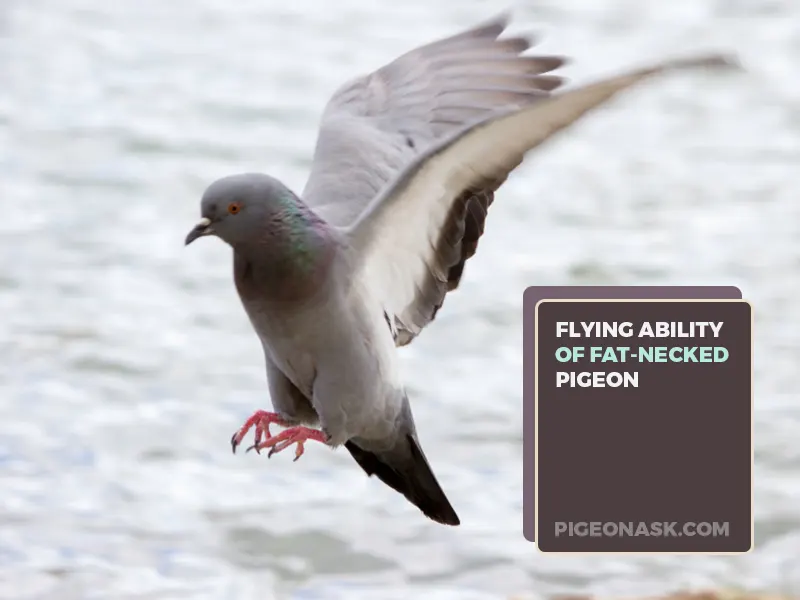
Aerodynamics may also be affected by the shape of their bodies since a wider body can cause more air resistance and require more energy to stay in the air.
Some breeds have been bred to have bigger necks while still being able to fly, and some fat-necked pigeons may still be able to fly well. A pigeon’s ability to fly can also be affected by its diet, how much it exercises, and its overall health.
Do Male Pigeons Have Big Necks?
Male pigeons can have long necks, depending on the breed and the bird’s traits. Some domestic pigeons, like the King pigeon or the show pigeon, have been bred to have big, fat necks, which are more noticeable in males than females.
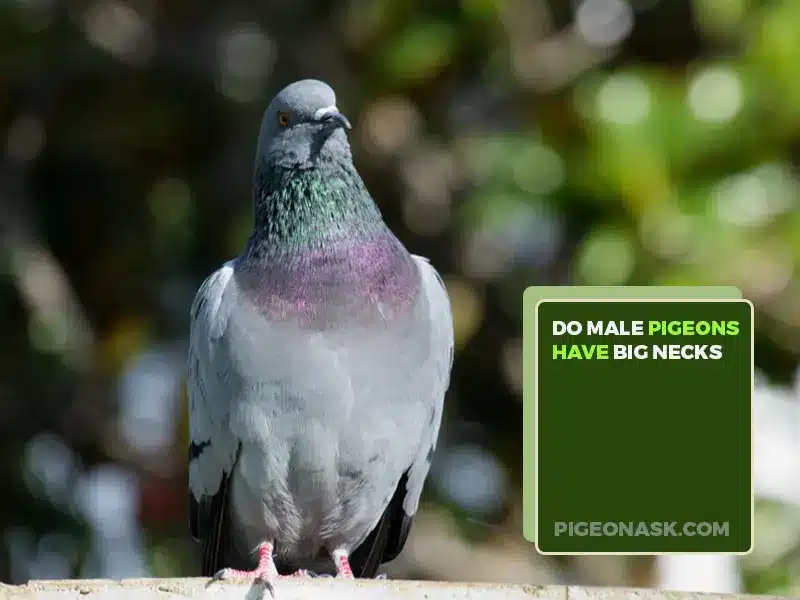
But not all male pigeons have big necks because they are all different, and other things, like diet and exercise, can also affect neck size.
During the breeding season, males of some species of wild pigeons may have slightly bigger necks than females because they use their necks to court females and fight other males.
But wild pigeons tend to have less of a difference in neck size between males and females than domestic breeds bred for specific traits.
What Other Species of Birds Also Have Fat Necks?
Several other species of birds tend to have fat necks as well. Here, we will look into some of those species.
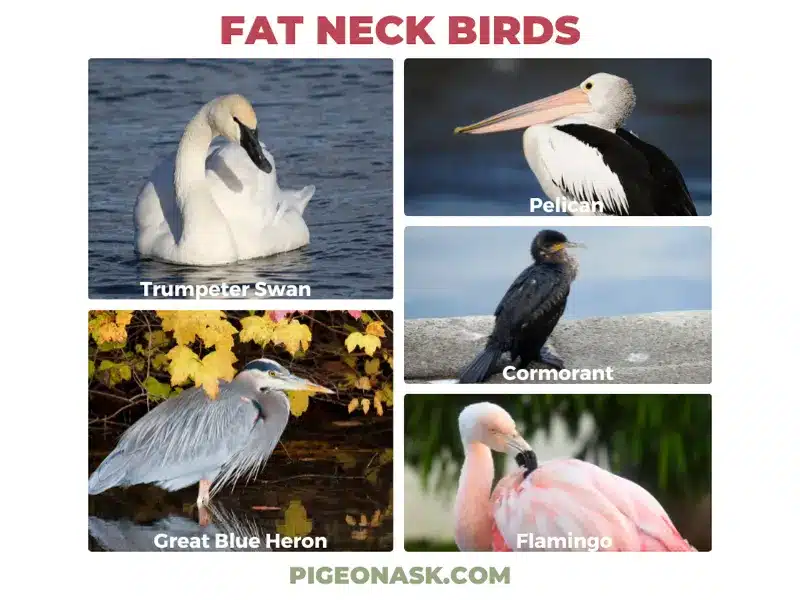
Trumpeter Swan
This species of swan lives in North America. It is known for its long, curved neck and trumpet-like call.
Great Blue Heron
This large bird’s long, thick neck lets it hunt fish and other animals in shallow water.
Pelican
Pelicans have big, expandable pouches in their throats that they use to scoop fish and other food out of the water.
Cormorant
These diving birds’ long, thin necks let them swim and dive underwater to find fish.
Flamingo
These large, pink birds have long, thin necks to reach into the water and filter out small crustaceans and other food.
Why Are Pigeon Necks Shiny?
Pigeons’ preen glands at the base of their tails make natural oils that can make their necks shiny. When birds preen, they spread the oil from their preen gland over their feathers and skin. This helps keep their feathers waterproof and keeps parasites away. The oils can also make the skin and feathers look shiny.

For instance, fat-necked pigeons have had their feathers, including the ones on their necks, bred for smoothness and shine. The feathers on these birds’ necks may shine more than those on other breeds.
It’s important to remember that a bird with a lot of oil on its feathers or skin could have health problems, a bad diet, or be exposed to pollution. When this happens, the shine may look more oily or greasy than it should. If you notice a change in your pigeon’s feathers, you should take it to a vet.
Final Words
After learning why some pigeons have fat necks, I didn’t know if I should be more concerned or less. And if you feel the same, we are in the same boat.
It could be harmful to their health, but at the same time, we can expect them to have some evolutionary benefits in the long run. All we can do is wait and see how their survival works out in the future. You can connect with us through Facebook, Pinterest, and Twitter.
Image Credit:
- Canva.com/photos
